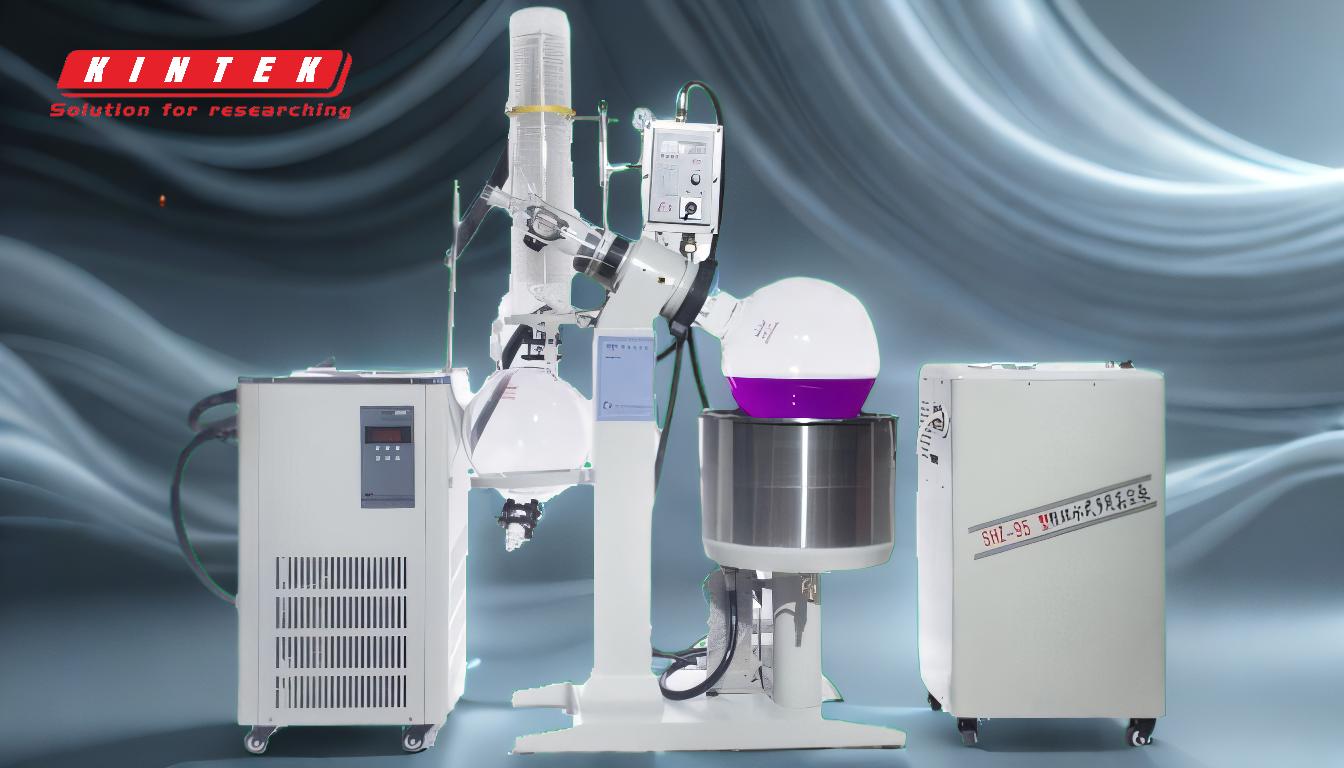Simple distillation is a fundamental separation technique used to purify liquids based on differences in their boiling points. It involves heating a liquid mixture to its boiling point, capturing the resulting vapor, and condensing it back into a liquid in a separate container. This method is particularly effective for separating components with significantly different boiling points, such as water and salt, or for purifying liquids with minimal contamination. While simple distillation is fast and straightforward, it is limited to mixtures where the boiling points of the components differ by at least 40–70°C. It is widely used in applications like producing distilled water, homemade perfumes, and alcoholic beverages.
Key Points Explained:

-
Definition and Process of Simple Distillation
- Simple distillation is a single-stage process where a liquid mixture is heated to its boiling point, and the resulting vapor is condensed into a separate container.
- The process relies on the principle that components with lower boiling points vaporize first, while those with higher boiling points remain in the boiling flask.
- The condensed vapor is collected in a receiving flask, providing a purified form of the component with the lower boiling point.
-
Applications of Simple Distillation
- Water Purification: Used to remove salts and impurities from water, producing distilled water.
- Homemade Products: Commonly used in making perfumes, soaps, and alcoholic beverages.
- Separation of Liquids: Effective for separating liquids with significantly different boiling points (e.g., ethanol and water).
- Removing Nonvolatile Contaminants: Useful for purifying liquids contaminated with nonvolatile particles, such as dirt or salts.
-
Key Requirements for Simple Distillation
- Boiling Point Difference: The boiling points of the components in the mixture must differ by at least 40–70°C for effective separation.
- Apparatus: Requires a boiling flask, condenser, and receiving flask. The boiling flask holds the mixture, the condenser cools the vapor, and the receiving flask collects the purified liquid.
- Temperature Control: The process involves careful heating to ensure that only the desired component vaporizes and condenses.
-
Advantages of Simple Distillation
- Simplicity: The process is straightforward and easy to set up, making it accessible for both laboratory and home use.
- Speed: It is a relatively fast method for separating components with large boiling point differences.
- Cost-Effectiveness: Requires minimal equipment and energy compared to more complex distillation methods.
-
Limitations of Simple Distillation
- Low Separation Efficiency: Only provides moderate purity improvements and is unsuitable for separating components with similar boiling points.
- Limited to Specific Mixtures: Effective only for mixtures with a significant boiling point difference (≥40–70°C).
- Inability to Handle Volatile Mixtures: Not suitable for separating highly volatile or azeotropic mixtures.
-
Comparison to Other Distillation Methods
- Fractional Distillation: Used for separating components with closer boiling points, involving multiple condensation and vaporization stages.
- Steam Distillation: Ideal for extracting essential oils and heat-sensitive compounds.
- Vacuum Distillation: Used for compounds with high boiling points or those that decompose at high temperatures.
-
Practical Considerations for Equipment Purchasers
- Material Quality: Ensure the boiling flask, condenser, and receiving flask are made of heat-resistant materials like borosilicate glass.
- Condenser Type: Choose between air-cooled or water-cooled condensers based on the application and cooling requirements.
- Scale of Operation: Select equipment sizes appropriate for the volume of liquid to be distilled, whether for small-scale laboratory use or larger industrial applications.
- Safety Features: Look for equipment with safety features like temperature controls and pressure relief valves to prevent overheating or explosions.
By understanding these key points, purchasers can make informed decisions about the suitability of simple distillation for their specific needs and select the appropriate equipment for efficient and safe operation.
Summary Table:
| Aspect | Details |
|---|---|
| Process | Single-stage heating and condensation of vapor to separate liquid mixtures. |
| Applications | Water purification, homemade products, and separation of liquids. |
| Key Requirements | Boiling point difference ≥40–70°C, boiling flask, condenser, receiving flask. |
| Advantages | Simple, fast, and cost-effective for large boiling point differences. |
| Limitations | Low separation efficiency, limited to specific mixtures. |
| Comparison | Less effective than fractional, steam, or vacuum distillation for complex mixtures. |
| Equipment Tips | Use heat-resistant materials, choose condenser type, and prioritize safety features. |
Discover the right distillation equipment for your needs—contact us today for expert advice!









